- +86 13512168749
- oversea@zlmcu.com
- Buy Online
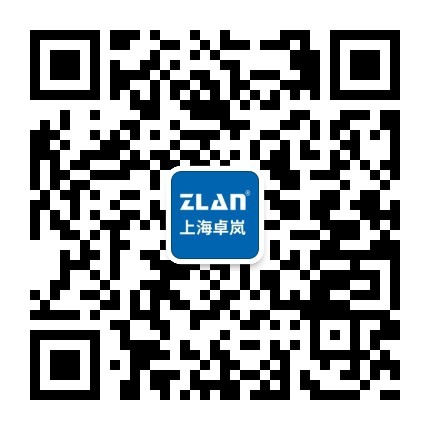

RS232/485 to 3G






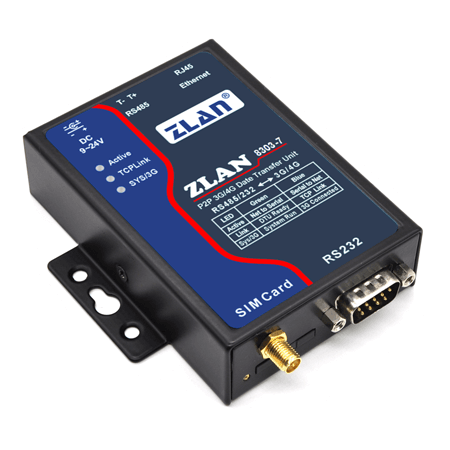
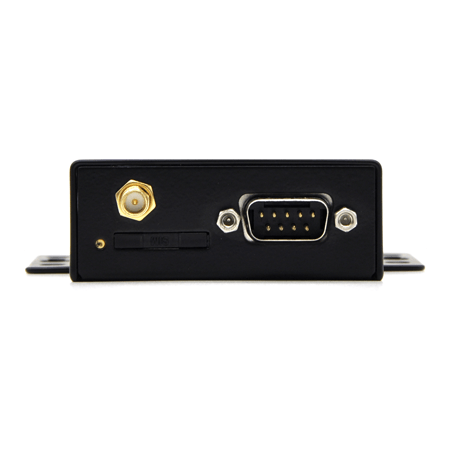
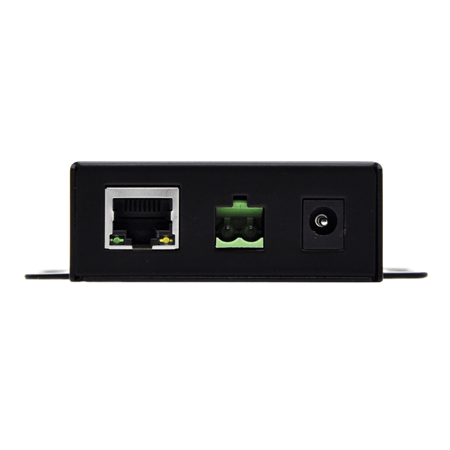






ZLAN8303
3G/4G networking solutions
 summarize
summarize
ZLAN8303 series is the 3G/4G networking solution launched by Shanghai ZLAN8100. Among them, there are four sub-models, which are the telecom card 3G model 8303, support Modbus TCP gateway function 8343, support mobile Unicom card 3G/4G model 8303-5, support P2P function 8303N. Modbus TCP and P2P capabilities can be attached to the 8303 or 8303-5 models, such as the ZLAN8343N-5.
8303 has an RS232/485 interface, which can send the data collected by RS232/485 to the cloud server through 3G/4G. Combined with ZLAN's P2P technology, users can also collect device data anytime and anywhere without even building a server, and the collection method can also use virtual serial ports. If it is 8343N, the Modbus TCP protocol can also be converted to Modbus RTU, and users can directly use Modbus TCP to collect data of RTU devices on the computer. ZLAN8343N and ZLAN8343N-5 are powerful P2P Modbus gateways suitable for telecom card and mobile/Unicom card respectively, which are very suitable for PLC monitoring and field data acquisition.
The8303 also has an Ethernet port, which can be used to communicate through the network port in the case of Ethernet, saving 3G/4G traffic. In addition, the 8303 can also be used as a 3G/4G router to achieve network port to 3G/4G.
ZLAN8303 series can be applied to: PLC remote monitoring; Industrial remote control, remote sensing, telemetry and public utilities; Meteorological data acquisition; Three prevention and hydrological monitoring; Finance, car and other industries.
The following describes the application of each seed model.
1. Ordinary 3G/4G DTU
Ordinary 3G/4G DTU can be used as TCP Server mode by other network devices to connect, because 3G/4G mode 8303 IP is not fixed, so generally not used as TCP Server mode. More often, it acts as a TCP Client to connect to a server with a fixed IP (or domain name) and send the data it collects. The software on the server can ask for data through rotation training. The RS485/RS232 of the 8303 can connect the serial port device and PLC that need to be collected, send the required instructions to the PLC, and upload the returned data to the server. As shown in Figure 1.

In this mode, the destination IP address of the 8303 must be set to the IP address of the server, that is, the user must lease a server with a public IP address. However, some applications may not have a public network server because the user accesses the Internet through a dial-up router. In this case, Port mapping and Dynamic Domain name must be set on the router to send 8303 data to the server. "Port mapping" and "dynamic domain name" have the following problems: (1) Some routers are standard with telecommunications, so you can't log in, so you can't do some Settings. (2) "Port mapping" may be too specialized for ordinary users and troublesome to set up. (3) The free scheme of "dynamic domain name" may have stability and real-time problems. Of course, for users with a public IP server, the ordinary ZLAN8303 is also very convenient to use.
2. Multi-host and Modbus gateway
The model number for this application is ZLAN8343 or ZLAN8343-5. In addition to the functions of the above common models, these two models have the following two functions: (1) They can be configured as Modbus gateways. As long as the device/advanced parameters/conversion protocol is set to "Modbus TCP to RTU", the Modbus gateway mode is switched. The upper computer can be queried using Modbus TCP, while the PLC can use RTU instructions. The Modbus of 8343 is a storage Modbus gateway, and the real-time performance of rotation training is stronger. (2) Multiple hosts. When set as Modus gateway, multiple hosts can be queried, and 8303 will answer separately to realize multi-host query; In non-Modbus gateway mode, multi-host query scheduling can also be implemented for model 8343 as long as more advanced options are selected for Multi-host support.
ZLAN multi-host technology is a technology developed for monitoring one device for multiple machines at the same time. In A common serial port server or DTU, when there are two monitoring computers, A and B can send data to the device, but the data received by the device from the serial port will be sent to A and B at the same time. That is, when A is communicating with the device, B will receive unwanted data, which will interfere with B's communication, and many software protocols will not be able to adapt to this situation and may not work.
ZLAN multi-host technology can realize the communication scheduling between A and B computers, when A communicates with the device, the device's reply data is only sent to A; When B needs to communicate, it can quickly switch to B. The ZLAN8343 will allow multiple computers to monitor the same device simultaneously. P2P 3G/4G serial server
3. P2P 3G/4G serial service
The model number for this application is ZLAN8303N or ZLAN8303N-5. This model integrates ZLAN's P2P technology, which can solve the inconvenience of ordinary 3G/4G DTU requiring "port mapping" and "dynamic domain name".

As shown in Figure 2, compared with Figure 1, (1) ZLAN P2P server is added here, and (2) the user computer replaces the monitoring server. Users do not need to use a server for monitoring, but can use their own laptop to monitor anytime and anywhere.
At the beginning of communication, ZLVircom, the P2P software on the user's computer, first communicates with ZLAN P2P server; At the same time, 8303 can also communicate with ZLAN P2P server, and after the two parties have negotiated, direct communication between 8303 and ZLVircom can be established (no need to forward through P2P server). The software on the user's computer can communicate through the virtual serial port provided by ZLVircom or the TCP analog port.
When used, users only need to input the serial number of 8303 to be monitored in ZLVircom software to establish a P2P connection. P2P mode enables users to get rid of the trouble of "port mapping" and "dynamic domain name", and there is no need to rent a public IP server, which truly realizes the convenient monitoring anytime and anywhere. The combination of P2P technology and 3G/4G wireless technology enables an innovative way of monitoring.
 peculiarity
peculiarity
 Product specification
Product specification
| 3G/4G parameters | Support mode | 1)8303/8343/8303N/8343N: standard EVDO/CDMA2000, telecom 3G/2G network. 2) 8303-5/8343-5/8303N-5/8343N-5: Supports 5 modes, TD-LTE/ FDD-LTE/ WCDMA/ TD-SCDMA/ GSM, Unicom 4G, 3G, 2G, mobile 4G, 3G, 2G and Telecom 4G networks. |
Working environment | Operating temperature, humidity | -40~85℃, 5 ~ 95% RH |
| Transmission rate | 1)3G network speed: upstream 5.76Mbps downstream 7.2Mbps. 2)4G network speed: upstream 2Mbps downstream 68Mbps. | Storage temperature, humidity | -45~165℃, 5~ 95% RH | ||
| SIM Card | Voltage: 3V, 1.8V Size: large card (small card can be purchased to use) | Electrical characteristics | Power interface | Q2.1 socket, can be customized for power terminal type input. | |
| Antenna interface | 50Ω/SMA stick antenna or suction antenna optional | Voltage input | 9 ~ 24V DC | ||
| Current | less than 200mA@9V | ||||
| Serial port parameters | Serial port type | RS-232/RS-485 | Mechanical characteristics | Size | Length × width × height =9.4cm×6.5cm×2.5cm |
| Serial port parameters | Baud rate: 1200~115200bps; Data bits: 5 ~ 9 bits; Stop bit: 1 to 2 bits; Fluid control: hard fluid control, soft fluid control; Check bits: none, even, odd, mark, or space. |
 Document Download
Document Download
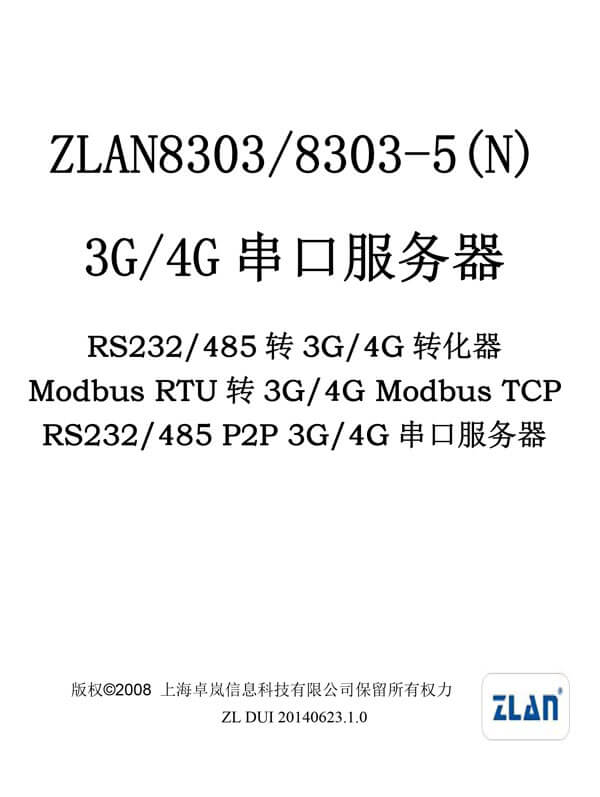
 Download
Download
 Related documents
Related documents
